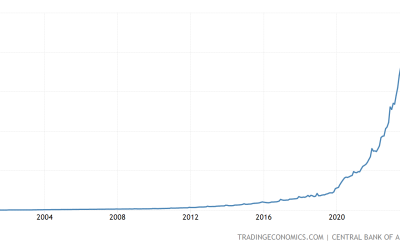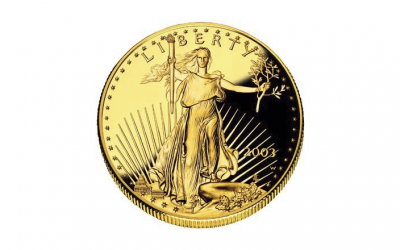In a recent string of tweets, economist Paul Krugman talked about the government issuing either a trillion-dollar coin or “premium bonds” as a means of keeping its nearly seven-decade-long spending spree going. He argued that premium bonds were more likely because, “nobody understands premium bonds,” and “…(it’s) hard to get outraged over something that baffles you.”
About possible end runs around the debt ceiling. I have no inside information, but my guess is that premium bonds are a more likely route than the platinum coin. Why? Because nobody understands premium bonds, while people think — wrongly — that they understand the coin 1/
— Paul Krugman (@paulkrugman) May 3, 2023
We’ve reached a point where the political class’s primary concern is no longer doing what’s best for the economy, but getting around the letter of the law while fooling the public as to what they’re really doing. Politicians are starting to look uncomfortably like drug addicts and the Fed as the neighborhood pusher. Both know what their futures hold, but they’ve come too far to change course.
The premium bond thing is an accounting sleight of hand. To hear Krugman tell it, the government could, for example, borrow $1,500 with a promise to pay back $1,000 plus another $100 each year for ten years, and call that a “$1,000 debt.” Then the government would pay off an existing $1,000 debt, and have $500 left over to spend. In effect, he’s saying that the government should take a cash advance on one credit card to pay down the balance on another.
Now you can see why he’d prefer that you remain baffled.
Where the premium bond is a sleight of hand, the trillion-dollar coin is a smoke screen. The government, according to Krugman, would mint a $1 trillion platinum coin, deposit it in its account at the Fed, and then use funds from that bank account to pay bills. So far, this sounds like Modern Monetary Theory (MMT), a fringe economic theory that would have remained solidly on the fringe had politicians not discovered its use as academic window-dressing to justify runaway spending. Thankfully, the public pretty quickly realized that MMT was economic quackery.
Krugman pumps the smoke from backstage when he says, “The Fed would surely sterilize the monetary base by selling off some of its…US debt.” In other words, the trillion-dollar coin isn’t MMT because “the Fed.”
To blow away the smoke, note that any transaction between the government and the Fed has no effect on the economy provided the transaction doesn’t involve anyone else. So, let’s combine the Fed and the government into a single entity: FedGov. All we care about are transactions between FedGov and the rest of us. Transactions that remain within FedGov are only of concern to lawyers. Now here’s how the trillion-dollar coin scheme looks:
- FedGov creates $1 trillion in new money and uses it to buy stuff from us. Because the spending involves newly created money, it would put upward pressure on inflation.
- To counter the inflation, FedGov borrows $1 trillion from us.
That’s it. Blow away the smoke, and the trillion-dollar coin is simply FedGov borrowing $1 trillion from us.
There are only two reasons anyone is taking either of these proposals seriously: the proposals might get around the law, and they might fool the public. The trillion-dollar coin employs a legal technicality that might permit the government half of FedGov to print money — something heretofore only the Fed half of FedGov could do. The premium bonds employ accounting technicalities that might permit the government half of FedGov to borrow more without appearing to borrow more. Because both rely on technicalities, neither changes the reality that politicians are desperate for their next spending fix and hoping that, with enough technical jargon and hand-waving, the voters might not realize what’s going on — at least not this time.
Made available by the American Institute for Economic Research.




